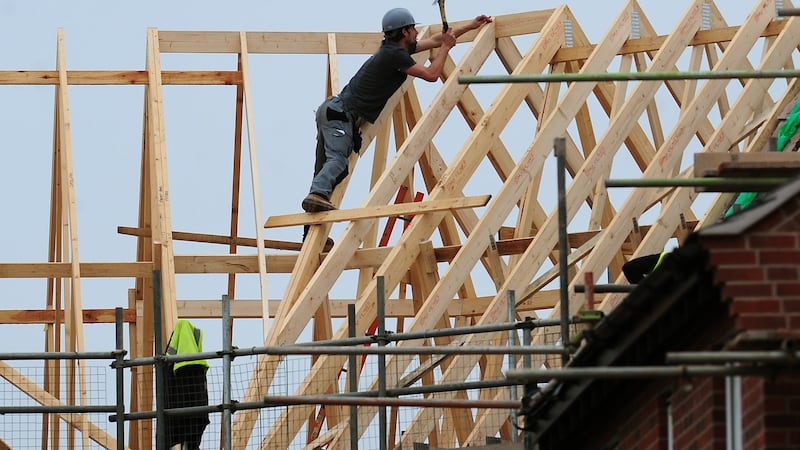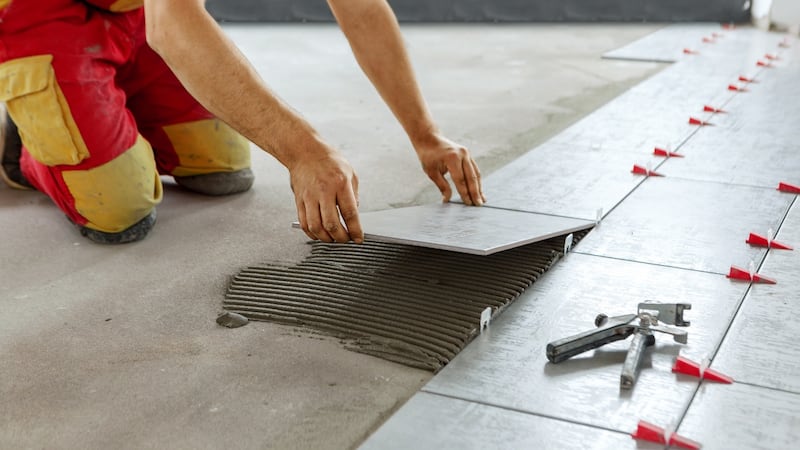When the Government announced its ambitious plan to retrofit 75,000 houses a year, three thoughts tumbled over one another. This is great. Who’s going to do it? And will they make a complete hames of it?
The last question is prompted, not by cynicism, but by bitter experience. Around 170,000 apartments were built during the Celtic Tiger years. Around 100,000 of them are affected by fire safety problems, leaky balconies and/or defective roofs.
The work of one building company alone left us with 40 schools that required on average a million euro each of public money to remediate defects. And let’s not even get started on pyrite and mica.
There are many excellent construction companies in Ireland. But before we get excited about the great national retrofit project, we must face the fact that a lot of Irish builders have Jerry as a middle name.
We have recreated McAlpine's Fusiliers at home. Shoddy building is a result of shoddy treatment
And before any of us lucky enough to own houses are going to let builders come in and turn our homes upside down and inside out, we have to know that we are not giving cowboys the run of the place.
If the retrofit scheme is going to work – and it must work if we are to take real action on climate change – the Government must deal with a glaring deficit in construction skills. There was already a need for an extra 27,000 construction workers, before the retrofit plan was announced.
Irish Navvy
The roots of this problem lie in the way Irish culture swings between extremes. For generations, construction work was associated with the image of Irish Navvy.
It was indelibly linked to emigration, to shame, to gangs of hard-drinking men, semi-nomads who worked their guts out by day on building sites and drank their brains out at night, dulling both the physical pain of the work and the anguish of being forced to live so far away from their wives and children.
Perhaps it was inevitable that as we retrofitted Ireland as a high-tech economy populated by shining university graduates, we would want to bury all of this bad memory.

The right reaction, though, would have been to create a system in which young men and women could have rigorous training in construction skills, enjoy good careers in Ireland and be valued at least as much as those of us who work on computer screens.
Instead, we have recreated McAlpine’s Fusiliers at home. Shoddy building is a result of shoddy treatment.
If construction work is badly regulated, if those who are trying to make secure careers in the field are forced into bogus self-employment so their bosses can shirk their responsibilities, is it any wonder that ambitious young women and men don’t want to do it?
No security of employment
Very few Irish building companies now employ most of their workers directly. In 2020, Irish construction companies were using five times more tradespeople as sub-contractors than they were hiring as employees.
If you want to do these jobs, you have to become a sub-contractor with fewer rights and protections and no security of employment. Equally, companies care less about ensuring that those they hire as casual labour have the right qualifications or continue to develop their skills. They are not “their” workers.
The consequences for the “wet trades” most relevant to retrofitting (bricklaying, floor and wall tiling, painting and decorating, and plastering) have been predictably dire.
Between 2012 and 2020, how many apprentice floor and wall tilers were registered in Ireland? None. Not one. In 2020, members of the Construction Industry Federation were employing as tilers zero apprentices, fifty people with actual full-time jobs, and 693 casual sub-contractors.

So, it’s not, obviously, that nobody has been laying tiles. It is rather that there is no guarantee that those who are doing the work have been properly trained or have the right skills.
This shift from direct employment to bogus self-employment is a classic example of the way the pursuit of short-term profit ends up damaging the ecosystem on which an industry depends.
Devalued and undermined
The construction industry deliberately devalued and undermined the educational system that produced the skilled workers it needs. It then finds itself wondering why it can’t get enough skilled workers.
It is quite right to ask those of us who can afford to do so to retrofit our homes for the sake of all our futures
The lazy way out has been, of course, to import construction workers from central and eastern Europe. But many of these countries now have their own shortages of skilled builders. And even if we can attract them to Ireland, where are they going to live? Will we have to employ them first to build their own houses before they retrofit ours?

The Government should start by being honest about this. It is quite right to ask those of us who can afford to do so to retrofit our homes for the sake of all our futures.
But people simply won’t do so if they don’t trust the construction firms to which they are being asked to hand over their homes and money.
The current system means that the people who arrive at your door, and wave you off as you leave them to transform your house, will almost certainly be “self-employed” sub-contractors who may or may not have they skills and qualifications to do the job properly. That system is very obviously unfit for purpose.












